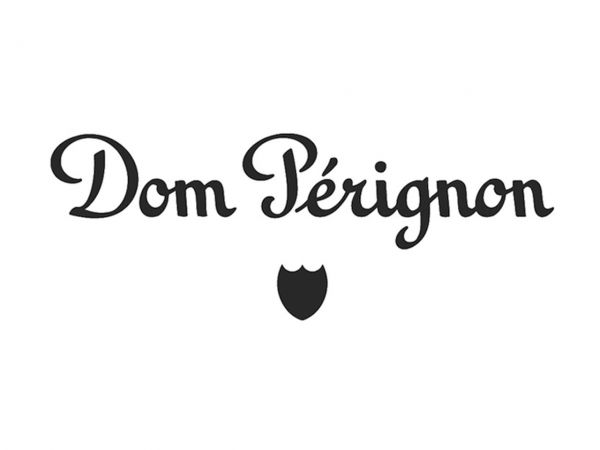History
Moët et Chandon began as Moët et Cie[1] (Moët & Co.), established by Épernay wine trader Claude Moët in 1743,[3] and began shipping his wine from Champagne to Paris. The reign of King Louis XV coincided with increased demand for sparkling wine. Soon after its foundation, and after son Claude-Louis joined Moët et Cie, the winery's clientele included nobles and aristocrats.
In 1833 the company was renamed Moet et Chandon after Pierre-Gabriel Chandon, the director of maisson4, joined the company as a partner of Jean-Remy Moet, Claude Moet's grandson.
Following the introduction of the concept of a vintage champagne in 1840, Moët marketed its first vintage in 1842. Their best-selling brand, Brut Imperial, was introduced in the 1860s. Their best known label, Dom Perignon, is named for the Benedictine monk remembered in legend as the "Father of Champagne".
Moët & Chandon merged with Hennessy Cognac in 1971 and with Louis Vuitton in 1987 to become LVMH (Louis-Vuitton-Moët-Hennessy), the largest luxury group in the world, netting over 16 billion euros in fiscal 2004. Moët & Chandon holds a royal warrant as supplier of champagne to Queen Elizabeth II.[4][3][5]
In 2006, Moët et Chandon Brut Impérial issued an extremely limited bottling of its champagne named "Be Fabulous", a special release of its original bottle with decorative Swarovski crystals, marking the elegance of Moët et Chandon.
Around 5 million bottles are produced in each vintage.[7] The wine is 60% Chardonnay and 40% Pinot noir, with 6 g/l dosage.[7]According to Tom Stevenson, "All vintages need at least 12 years ageing to nurture Dom Pérignon's signature silky mousse".[7] As of 2008, the current release of Dom Pérignon is from the 2000 vintage[7] and the current release of Dom Pérignon Rosé is from the 1998 vintage. As of 2017 the senior winemaker was Richard Geoffroy, who has been chef de cave for Dom Pérignon since 1990.[8]
Dom Pérignon is always an assemblage of Pinot noir andChardonnay grapes, although the final composition changes every vintage: at times a blend in perfectly equal proportions (e.g. 1990 Rosé), at times up to 60% Chardonnay (1982) or 60% Pinot noir (1969), and only once going over 60% (with 65% Chardonnay in 1970).
Dom Pérignon (/ˌdɒmpɛrɪˈnjɒn/; French pronunciation: [dɔ̃ peʁiɲɔ̃]) is a brand of vintage Champagne produced by the Champagne house Moët & Chandon and serves as that house's prestige champagne. It is named after Dom Pérignon, a Benedictine monk who was an important quality pioneer for Champagne wine but who, contrary to popular myths, did not discover the champagne method for making sparkling wines.[1]
History
Dom Pérignon (1638–1715) was a monk and cellar master at the Benedictine abbey in Hautvillers. He pioneered a number of winemaking techniques around 1670—being the first to blend grapes in such a way as to improve the quality of wines, balance one element with another in order to make a better whole, and deal with a number of their imperfections; perfecting the art of producing clear white wines from black grapes by clever manipulation of the presses; enhancing the tendency of Champagne wines to retain their natural sugar in order to naturally induce secondary fermentation in the spring; being a master at deciding when to bottle these wines in order to capture the bubble. He also introduced corks (instead of wood), which were fastened to bottles with hemp string soaked in oil in order to keep the wines fresh and sparkling, and used thicker glass in order to strengthen the bottles (which were prone to explode at that time).[2] The development of sparkling wines as the main style of production in Champagne occurred progressively in the 19th century, more than a century after Dom Pérignon's death.
Until the 1943 vintage, Dom Pérignon was produced from regular vintage Moët & Chandon Champagne that was transferred to the special 18th century-style bottles after extended cellaring. It was, thus, effectively an "oenothèque" release of Moët & Chandon Vintage Champagne in a different bottle. From the 1947 vintage, Dom Pérignon has been produced separately from the start.[7]
In 1971, the Shah of Iran ordered several bottles of the first vintage of Dom Pérignon Rosé (the 1959) for the 2,500 year celebration of the Persian Empire. A bottle of that champagne, from that order, was sold at auction for €24,758 in 2008.[8]
In 1981, Dom Pérignon was chosen for the wedding of Lady Diana Spencer and Prince Charles. The magnums of Dom Pérignon Vintage 1961 served on that July 29 carried a special insignia created just for the ceremony.[9]
Vintages
Dom Pérignon is always a vintage champagne, meaning that it is not made in weak years, and all grapes used to make the wine were harvested in the same year. [10]
From 1921 to 2005, Dom Pérignon champagne has been produced in 41 vintages. More than two vintage years in a row used to be a rare phenomenon, which until 2004 had only occurred three times: in 1969, 1970, and 1971; in 1998, 1999, and 2000; in 2002, 2003, and 2004. 2005 marked the first time when four vintages had been produced in a row.
The 41 white Dom Pérignon vintages up to 2006 are: 1921, 1926, 1928, 1929, 1934, 1943, 1947, 1949, 1952, 1953, 1955, 1959, 1961, 1962, 1964, 1966, 1969, 1970, 1971, 1973, 1975, 1976, 1978, 1980, 1982, 1983, 1985, 1988, 1990, 1992, 1993, 1995, 1996, 1998, 1999, 2000, 2002, 2003, 2004, 2005 and 2006.[11]
Since 1959 a rosé version of Dom Pérignon is also produced. 24 Dom Pérignon Rosé vintages have been produced until 2004: 1959, 1962, 1964, 1966, 1969, 1971, 1973, 1975, 1978, 1980, 1982, 1985, 1986 (the only rosé vintage where the white version was not produced), 1988, 1990, 1992, 1993, 1995, 1996, 1998, 2000, 2002, 2003, and 2004.[11]










































































































































































